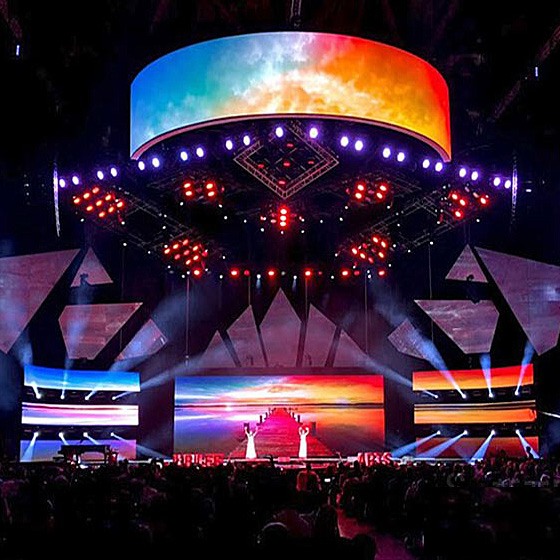No products in the cart.
Industry news
What factors determine the quality of full color LED displays.
Today, manufacturer of full color LED displays, tells you which factors determine the quality of full color LED displays.
The quality of a full color LED display screen can be mainly evaluated from the following aspects:
1. The surface flatness of the LED display screen should be within ± 1mm to ensure that the displayed image does not distort. Local protrusions or indentations may cause blind spots in the visual angle of the display screen. The flatness is mainly determined by the production process.
2. Brightness and visual angle: The brightness of the indoor full color screen should be above 800cd/m2, and the brightness of the outdoor street screen should be above 5500cd/m2 to ensure the normal operation of the display screen. Otherwise, the displayed image may not be clear due to low brightness. The brightness is mainly determined by the quality of the LED tube.
The size of the visual angle directly determines the audience of the display screen, so the larger the better. The size of the visual angle is mainly determined by the packaging method of the tube core.
3. White balance effect is one of the most important indicators of the display screen. In color science, pure white is only displayed when the ratio of the red, green, and blue primary colors is 1:4.6:0.16. If there is a slight deviation in the actual ratio, there will be a deviation in the white balance. Generally, it is important to pay attention to whether white has a bias towards blue or yellow green. The quality of white balance is mainly determined by the control system of the display screen, and the tube core also has an impact on the color reproduction.
4. Color restoration refers to the restoration of colors by the display screen. The color displayed on the display screen should be highly consistent with the color of the playback source, in order to ensure the authenticity of the image.
5. Is there a mosaic or dead center phenomenon? Mosaic refers to the small four squares that appear on the display screen and are usually bright or dark, which is the phenomenon of module necrosis. The main reason is that the connectors used on the display screen are of poor quality.
Dead spots refer to the individual dots that appear on the LED display screen that are constantly on or off, and the number of dead spots is mainly determined by the quality of the tube core.
6. The presence or absence of color blocks refers to the significant color difference between adjacent modules, and the color transition is measured in modules

